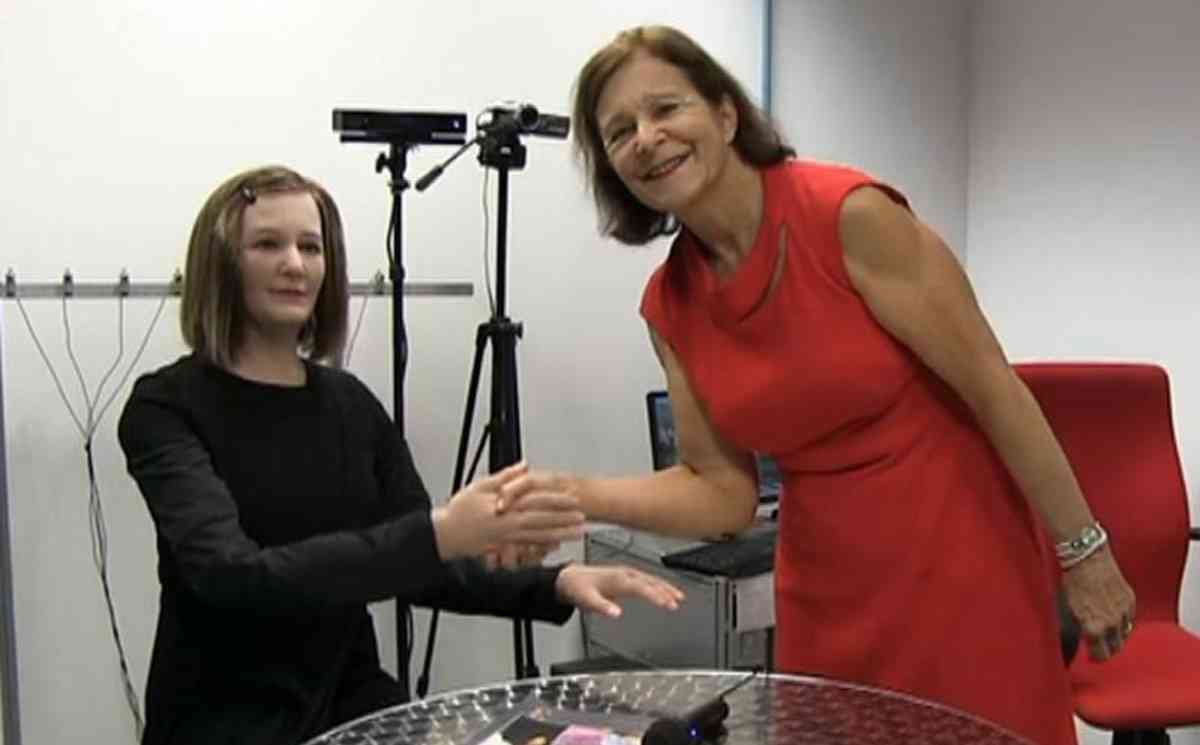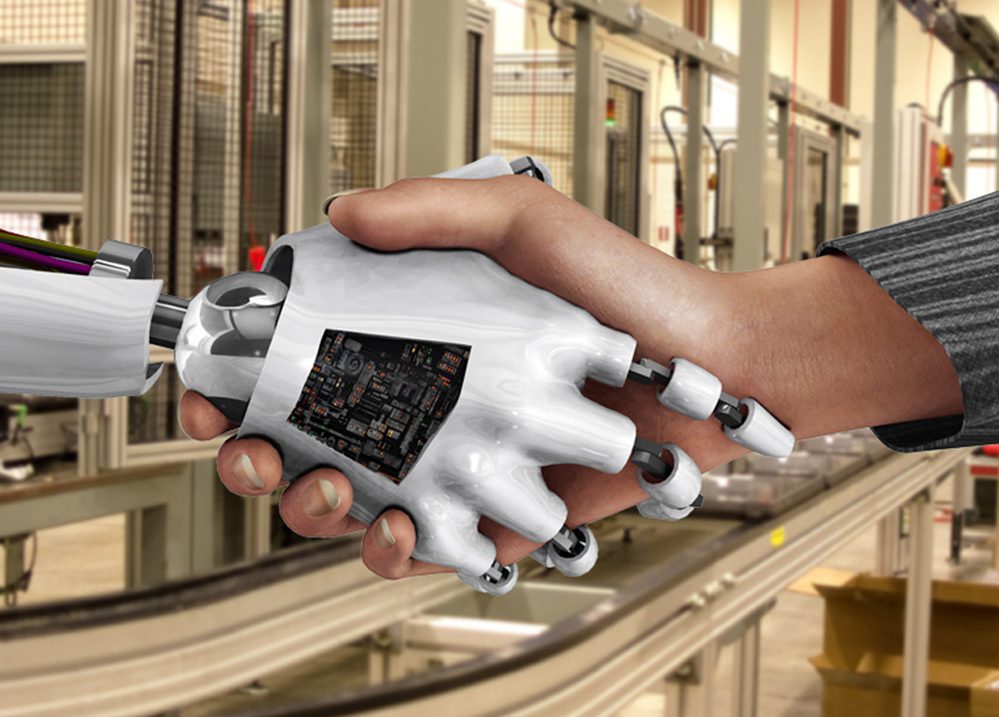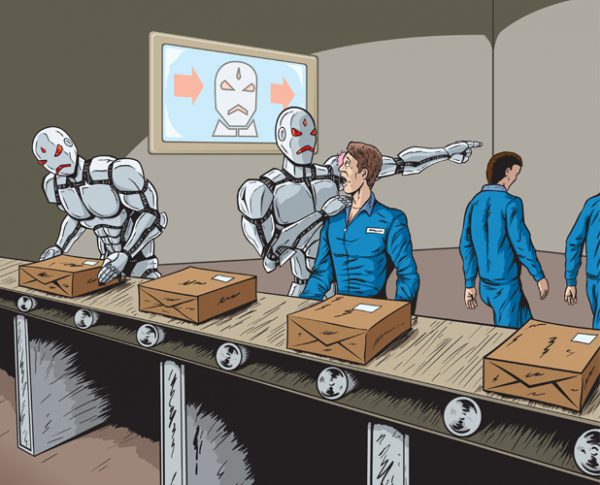The concept of automation and its imminent dangers have recognized and documented in almanacs dating back to the Industrial Revolution in the 18th century. The early 19th century saw isolated events in England where members of the English textile workers’ community, the Luddites smashed and damaged textile machinery like the lace-making machines in Loughborough. These incidents were preceded by an uprising in the Luddites’ community where in industrial equipment and machines were destroyed thus making protection acts like the Protection of Stocking Frames, etc. Act 1788 incumbent. These introductory instances are proof enough that the human civilization has imbibed a fear of being annihilated by automated machines and synthetic intelligence. The fear of losing out on employment opportunities or the scope of development, owing to growing automation and mechanization in every sphere is prevalent. The question arises – is it justified?
Related: Robots may eventually replace our police
The Inception of Automation
Automation and Industrial Control systems as a technological concept have been studied for ages and converted into prototypes and fully functional automation models. Control theory is a subject under the umbrella of electronic and computational engineering, which uses basic elements like sensors, transmitters, transducers and actuators to use data and communication systems. This is used to scale and automate processes across industrial and scientific applications. So when did control systems start making their presence felt across the various elements of modern human civilization?
One of the first application of Control Systems was seen in the form of Programmable Logic Controllers in the manufacturing sector. Manufacturing plants need multiple specifications before production lines get up and running. A lot of these pre-requisites are variable and need to change as per the need of the product. This changes the way the machinery functions and hence is very critical to any manufacturing process.
In the early 1900s, an automobile manufacturing plant demanded frequent changes in the configuration of machines due to switching designs in the sheet metal models every year. Manual intervention in this process is not only unnecessary but also inefficient as it wastes the human resource that could be used in some other department. This resulted in a stream of ideas to ‘automate the switching’. The person in charge suggested employing a mini-computer in the company to manage the interfaces from the switches and sensors to all the solenoids and contactor coils in the heavy machinery used for production. This way the workers in the company would only have to wire up the sensors and the coils once initially, and keep altering the logic program in the computer each model year. This movement in automating the production line went on to training workers on concepts like relay ladder logic and data communication systems.
Workers who earlier kept switching configurations and watched the processes individually could now master the nuances of the technology and work efficiently with the machines in a cohesive environment. This instance might serve as an evidence against the belief that automation shall devour all employment opportunities for humans.
Also Read: Where is Artificial Intelligence Headed?
Fear of Automation in the current decade

Over the decades, man has continued to develop technology and science at a rate that also manages to appalls people. From robots serving as waiters in Chinese restaurants to ‘Nadine’ the robot serving as a receptionist, the industry is seeing a lot of activity. The current angst about automation is around versatile and highly efficient robots substituting labor at a scale never saw before.
Distinguished technology expert Vivek Wadhwa has warned that robots and artificial intelligence (AI) will be capable of carrying out the majority of human jobs within 20 years if advances in technology persist at the current rate. However, despite reports claiming that around 11 million jobs in the United Kingdom will be automated, there is a high chance of these statistics being scaremongers to the human workforce. This is because, automation might give a few job profiles redundant, but might also create alternative career opportunities.

Eliezer Yudkowsky, a research fellow at the Machine Intelligence Research Institute explains the effect on automation on the agricultural industry by saying, ‘We went from 95% of the population being farmers to 2% of the population being farmers (in agriculturally self-sufficient developed countries). We don’t live in a world where 93% of the people are unemployed because 93% of the jobs went away.’
Reports claims that 40% of the youth across the world is haunted by the idea of automation taking over their jobs. Professionals in developed countries like the UK are exhibiting a higher amount of concern than their counterparts in developing countries. While 76% of Indian youth is confident about their IT and technological skills, only 38% of the Australians are out of the concern bracket. This distribution is reflection of the learning curve of population across geographies. Brazilians for instance, believe in acquiring skills on the go and keep learning to retrain themselves for changing job profiles which in turn, attributes to a high confidence level in around 62% of the youth.
Humans need to be the core of automation

The ambivalence towards automation can break down into multiple fears: The fear of failure, the fear of permanently worsening things, the fear of encountering unknown risks, so on and so forth. We need to understand the process of automating things instead of just scrutinizing the results. Theoretically, subjects like electronics, machine learning, control theory, AI and data sciences might teach one the ‘What’ and ‘Why’ of automation. What we need is the ‘How’ to use automation efficiently as we stride towards progress.
The fundamental principle is to train the circuitry to do the same tasks as humans did in a language that is understood by machines. No synthetic system can run with efficacy if there is no human element in the process. We need to aim to build a symphony of a man-machine model where in humans can orchestrate the machines to work on a certain algorithm with speed, robustness and accuracy. While we do that, we remove the fear of being over-powered by machines and even tackle the fear of losing out on jobs.
This human-centric approach to automation has helped major industrial giants like Foxconn, Canon and Tesco build their revenues and profits. Post legal feuds over workers’ wages, living conditions and working conditions, Foxconn has taken to a path of automating their production line with manual intervention only to start, monitor and correct the automatic processes. It has successfully created a harmonic socio-economic system where in profits are high and not at the cost of the lives of human labor.

In summary, while automation is inevitable by the ticking clock, we need to thrive through the changing times by taking the transformation in our stride and not fighting it. Post industrialization, automation and digitization are meant to bring about a Renaissance in the way industries function. We thus need to retrain our youth to keep building more opportunities around the digital changes and not believe that human resources shall be made obsolete with advent of automatic processes.


